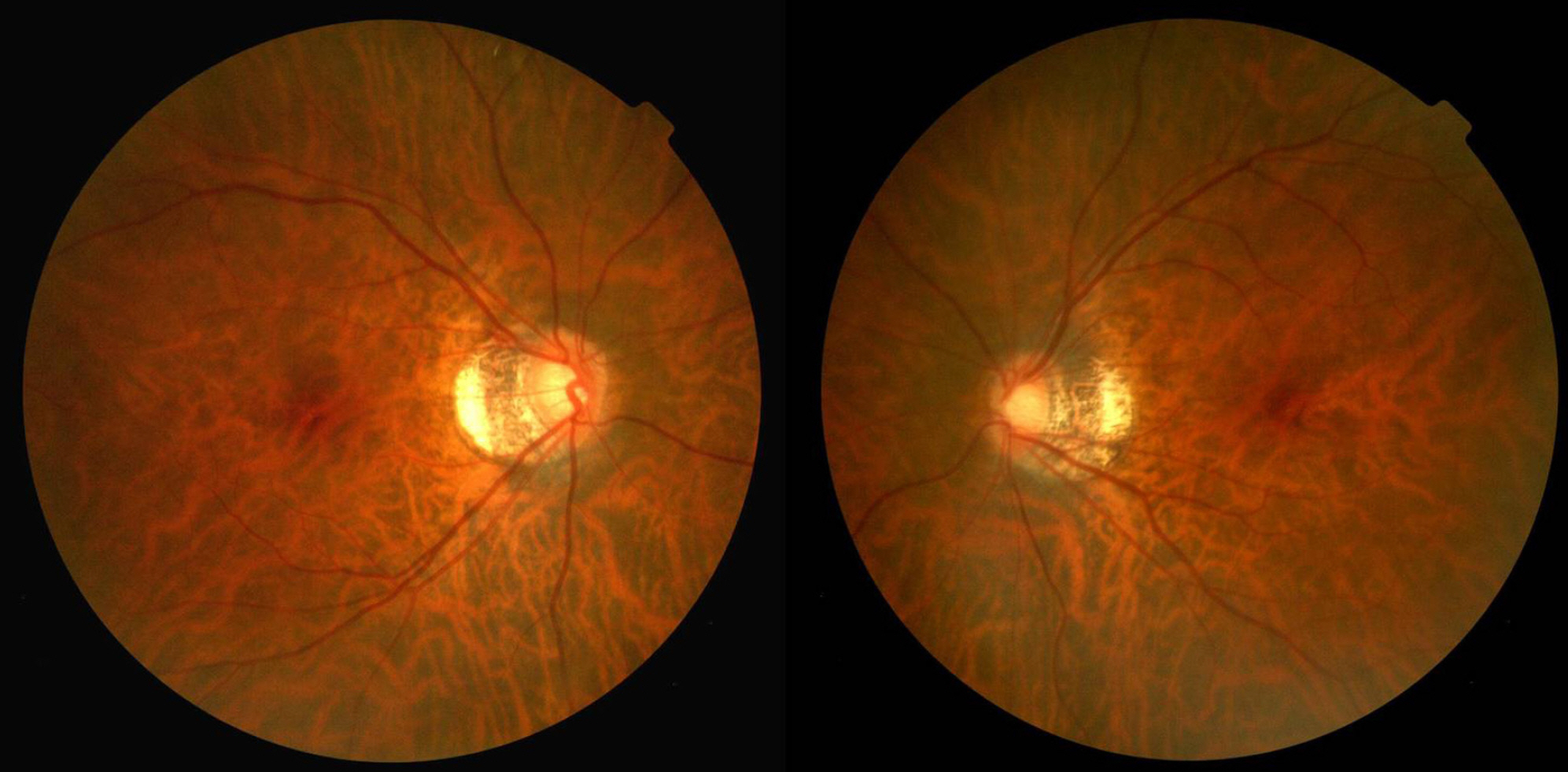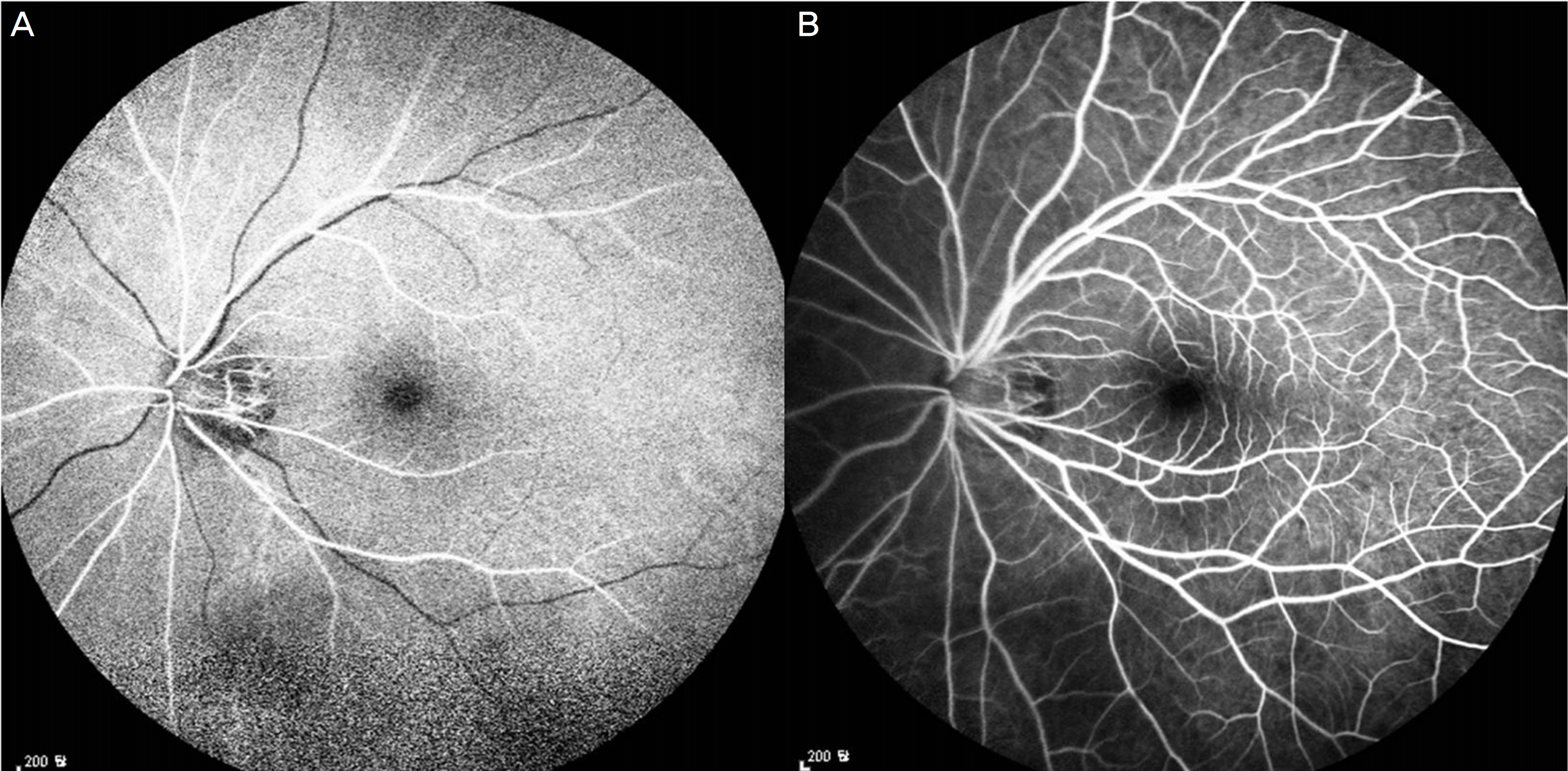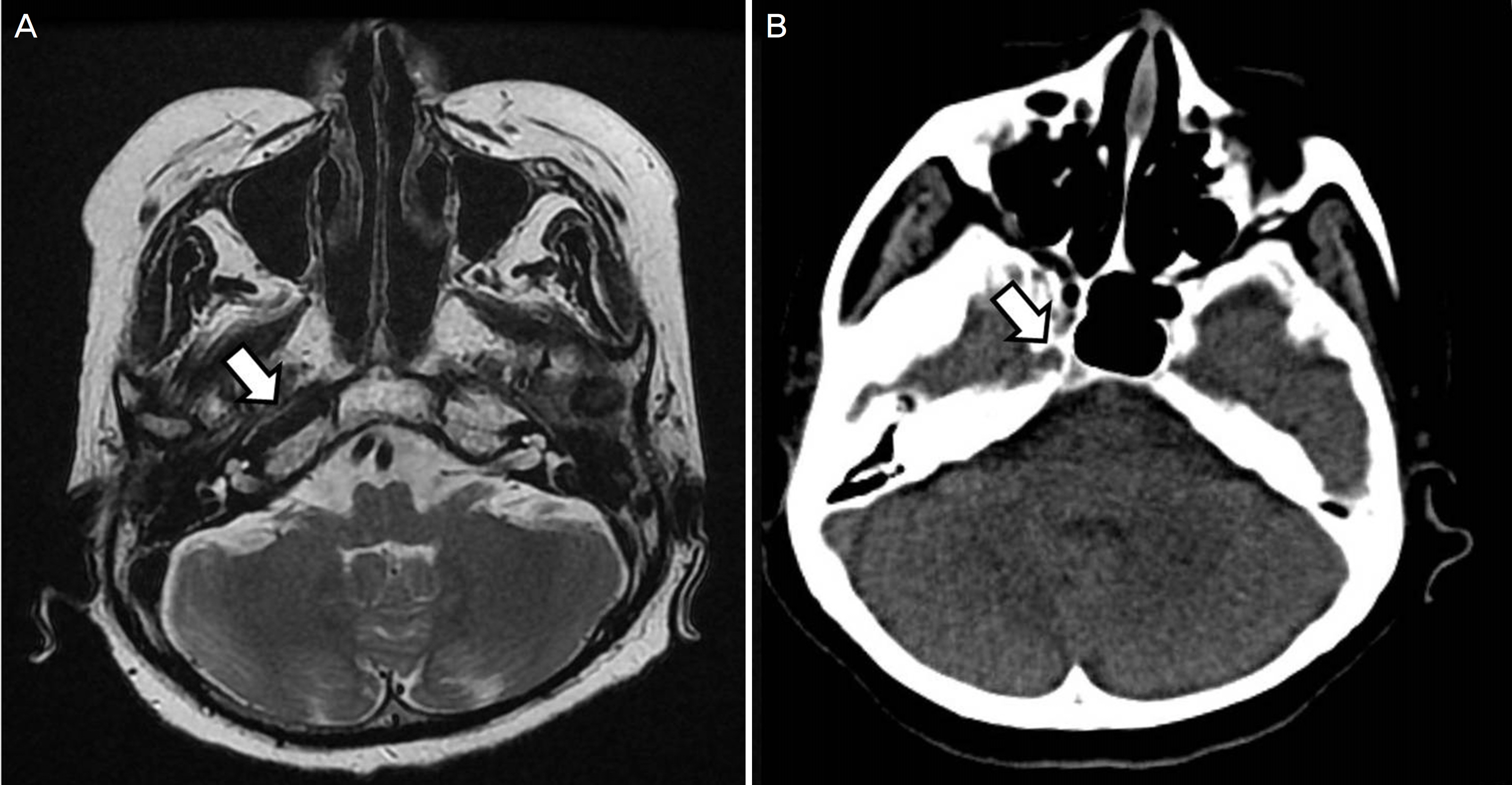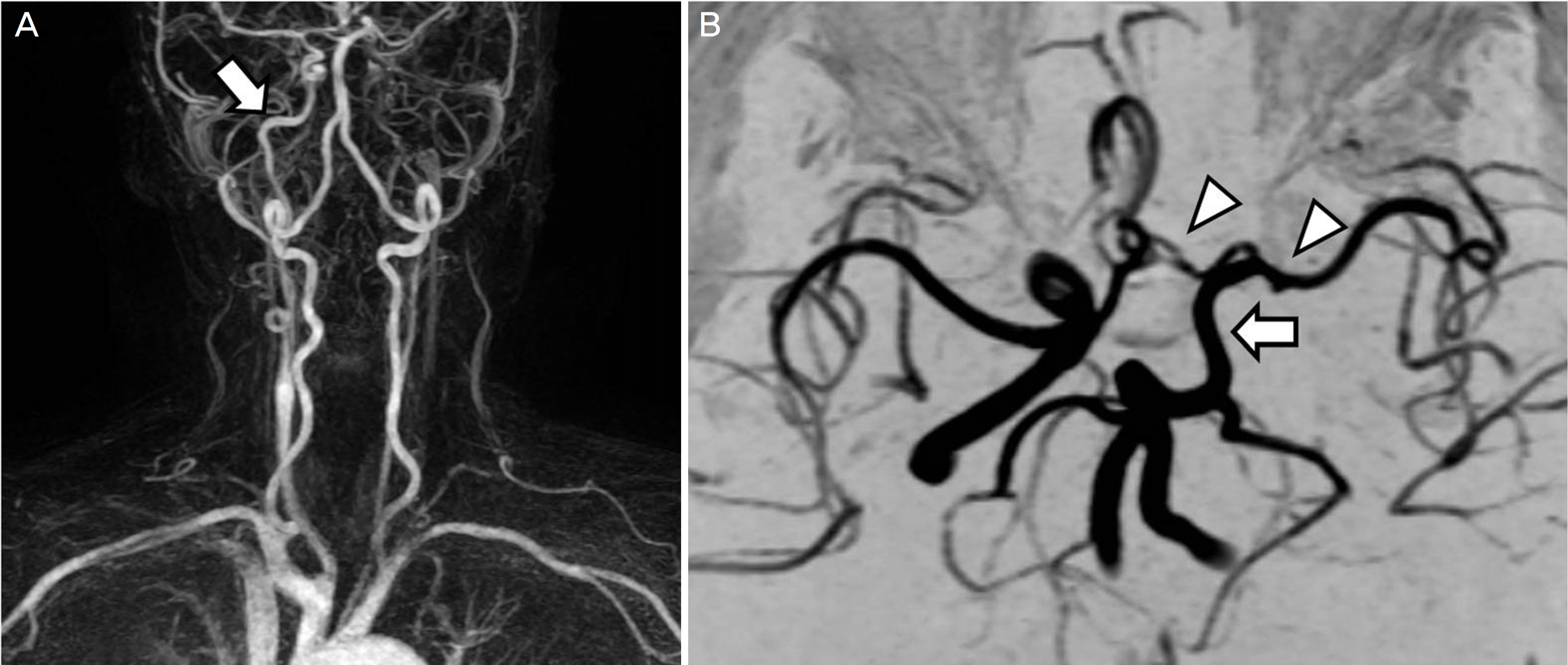J Korean Ophthalmol Soc.
2016 Sep;57(9):1484-1488. 10.3341/jkos.2016.57.9.1484.
Amaurosis Fugax Associated with Ipsilateral Internal Carotid Artery Agenesis
- Affiliations
-
- 1Department of Ophthalmology, Chungnam National University Hospital, Chungnam National University School of Medicine, Daejeon, Korea. kkn9901700@hanmail.net
- 2Department of Neurology, Chungnam National University Hospital, Chungnam National University School of Medicine, Daejeon, Korea.
- KMID: 2351883
- DOI: http://doi.org/10.3341/jkos.2016.57.9.1484
Abstract
- PURPOSE
We report a case of amaurosis fugax associated with ipsilateral internal carotid artery agenesis.
CASE SUMMARY
A 50-year-old woman presented with amaurosis fugax in her left eye; the frequency of episodes of the condition had recently increased to once a month. She had a history of hypertension and dyslipidemia, and was under medical therapy. The visual acuity of both eyes was 20/20. Slit-lamp examination was normal except for pseudophakia. Ophthalmoscopy revealed a myopic tigroid fundus and a myopic tilted disc. No abnormalities were evident in fluorescein fundus angiography. Brain computed tomography showed that the left bony carotid canal was absent, and magnetic resonance angiography showed that the left internal carotid artery was also absent. She was diagnosed with left internal carotid artery agenesis. Other neurological and hematological parameters were within normal ranges. The amaurosis fugax spontaneously disappeared and has not recurred over the past 12 months. Our case, although rare, suggests that amaurosis fugax may be associated with internal carotid artery agenesis.
Keyword
MeSH Terms
Figure
Reference
-
References
1. Current management of amaurosis fugax. The Amaurosis Fugax Study Group. Stroke. 1990; 21:201–8.2. Burde RM. Amaurosis fugax. An overview. J Clin Neuroophthalmol. 1989; 9:185–9.3. Hayreh SS, Zimmerman MB. Amaurosis fugax in ocular vascular occlusive disorders: prevalence and pathogeneses. Retina. 2014; 34:115–22.4. Kim NR, Chin HS. Progression of impending central retinal vein occlusion to the ischemic variant following intravitreal bevacizumab. Korean J Ophthalmol. 2010; 24:179–81.
Article5. Lee DH, Lee SJ, Yoon IN. Clinical progress in impending central retinal vein occlusion. Korean J Ophthalmol. 2010; 24:83–8.
Article6. Shaw HE Jr, Osher RH, Smith JL. Amaurosis fugax associated with SC hemoglobinopathy and lupus erythematosus. Am J Ophthalmol. 1979; 87:281–5.
Article7. Heckmann JG, Gaul C, Neundörfer B, et al. Vasospastic amaurosis fugax. J Neurol Neurosurg Psychiatry. 2003; 74:149.
Article8. Jehn A, Frank Dettwiler B, Fleischhauer J, et al. Exercise-induced vasospastic amaurosis fugax. Arch Ophthalmol. 2002; 120:220–2.9. Jo YJ, Yun YJ, Kwag JY, Kim JY. Valsalva maneuver-induced amaurosis fugax. J Korean Ophthalmol Soc. 2010; 51:779–83.
Article10. Afifi AK, Godersky JC, Menezes A, et al. Cerebral hemiatrophy, hypoplasia of internal carotid artery, and intracranial aneurysm. A rare association occurring in an infant. Arch Neurol. 1987; 44:232–5.11. Graham CB 3rd, Wippold FJ 2nd, Capps GW. Magnetic resonance imaging in internal carotid artery agenesis with computed abdominal and angiographic correlation-case reports. Angiology. 1999; 50:847–54.12. Cali RL, Berg R, Rama K. Bilateral internal carotid artery agenesis: a case study and review of the literature. Surgery. 1993; 113:227–33.13. Mellado JM, Merino X, Ramos A, et al. Agenesis of the internal carotid artery with a trans-sellar anastomosis: CT and MRI abdominal in late-onset congenital hypopituitarism. Neuroradiology. 2001; 43:237–41.14. Czarnecki EJ, Silbergleit R, Mehta BA, Sanders WP. Absence of the supraclinoid internal carotid artery in association with abdominal aneurysms. Neuroradiology. 1998; 40:11–4.15. Jung BO, Lee JI, Choi JH, et al. Congenital hypoplasia of the abdominal internal carotid artery: a case report. J Korean Neurosurg Soc. 2002; 31:282–4.16. Ito S, Miyazaki H, Iino N, et al. Unilateral agenesis and hypoplasia of the internal carotid artery: a report of three cases. Neuroradiology. 2005; 47:311–5.
Article17. Na SK, Park TH, Ahn JY, Kim MK. A case of unilateral agenesis of internal carotid artery with throbbing headache. J Neurocrit Care. 2008; 1:174–6.18. Lasjaunias P, Berenstein A, Brugge KT. Clinical vascular anatomy and variations. 2nd ed.Berlin: Springer;2001. p. 414–24.19. Naeini RM, De J, Satow T, Benndorf G. Unilateral agenesis of abdominal carotid artery with ophthalmic artery arising from posterior communicating artery. AJR Am J Roentgenol. 2005; 184:571–3.20. Savastano S, Feltrin GP, Chiesura-Corona M, Miotta D. Cerebral ischemia due to congenital malformations of brachiocephalic ar-teries-case reports. Angiology. 1992; 43:76–83.
Article21. Sliwka U, Schmidt P, Reul J, Noth J. Agenesis of the internal carotid artery: color Doppler, CT, and MR angiography findings. J Clin Ultrasound. 1988; 26:213–6.
Article22. Halstuk KS, Littooy FN, Baker WH. Absent common carotid abdominal associated with amaurosis fugax: a case report. Surgery. 1985; 97:502–6.
- Full Text Links
- Actions
-
Cited
- CITED
-
- Close
- Share
- Similar articles
-
- Ocular and Systemic Manifestation of Amaurosis Fugax: Six-Year Observational Study
- Amaurosis Fugax Associated with Stenosis of the Intracranial Internal Carotid Artery: Successful Restoration of Ophthalmic Artery Flow by Stent Placement
- A Case of Systemic Lupus Erythematosus Presenting with Amaurosis Fugax without Antiphospholipid Antibodies Syndrome
- A Case of Internal Carotid Artery Dissection Presenting with Isolated Hypoglossal Nerve Palsy
- Valsalva Maneuver-induced Amaurosis Fugax





